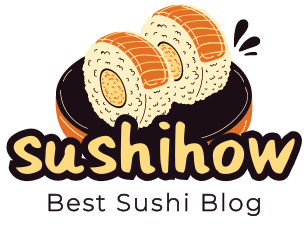Sushi Etiquette – How to Eat Sushi Like a Japanese Chef
Professional sushi chefs devote years to crafting delectable bites enjoyed around the globe. Show your gratitude by adhering to some basic sushi etiquette rules.
Avoid diverting their attention with questions about ingredients or the weather, and never offer money; after all, these professionals work with raw fish all day!
1. Be Polite
As rules vary depending on where you eat sushi, here are a few basic etiquette guidelines every customer should abide by when dining on sushi. From casual conveyor belt restaurants to high-end sushi spots in Tokyo, being polite when eating sushi should always be your goal.
As an example, avoid dousing sushi in soy sauce and only adding small amounts of wasabi – too much soy sauce could overshadow the delicate flavors of your seafood and ruin its appeal.
At the same time, don’t get in their way as they work to prepare delicious cuts of fish. Let them do their work uninterrupted and thank them later when the restaurant serves up delicious meals!
2. Don’t Suck on Your Chopsticks
Chopping or sucking on one’s chopsticks is considered rude in Japanese culture and considered an act of incompetence by chefs and other diners.
Do not return a piece of sushi you can’t finish to your plate – even if it is half eaten – as this can be considered an insult. Additionally, using chopsticks instead of your fingers to pass food around between people is considered impolite; use your fingertips instead! Slurping noodles may also be acceptable since Japanese culture believes this allows the full flavor to come through; however it isn’t permitted when eating sashimi with your fingers.
3. Don’t Leave Any Rice Behind
Finishing your sushi is vital – leaving any rice behind is considered very disrespectful in Japan, showing the chef that you were either not enjoying your meal or were unable to finish it all.
Japan prides itself on rice being considered life. You should use soy sauce only on its fish side of your sushi and never completely submerge it in it; doing this could ruin the delicate flavors. A great sushi chef will brush on just enough soy sauce onto each piece for you – they don’t want any of their hard work going wasted!
4. Don’t Put a Half-Eaten Piece Back on Your Plate
At a kaiten sushi restaurant in Japan, it is essential to remember proper etiquette when eating sushi from a conveyor belt. It would be considered impolite to return half-eaten pieces back onto your plate because sushi should be consumed all at once. Soaking fish sides in soy sauce could stain rice or discolor other diners’ meals.
Eat your sushi in the order it was served to you; that way you’ll fully experience each flavor and appreciate each dish more fully. Plus, chefs appreciate it if their customers follow this rule too!
5. Don’t Point Your Chopsticks to the Right
At Japanese restaurants or Sushi bars, it’s considered proper table manners to store your chopsticks parallel when not in use. While an ideal solution would be placing them in their designated holder, placing them anywhere other than to the right should still work as long as no pointers point toward that direction.
Pitchforking with your chopsticks is considered rude. Furthermore, you should refrain from licking, chewing on, or using them to remove rice from your teeth (known as moghi-bashi).
As soon as possible, it is ideal to consume one piece of sushi all at once and drink water rather than soup to aid your digestion. Also try eating some pickled ginger between bites of sushi to cleanse your palate.
6. Don’t Suck on Wasabi
When dining at a sushi bar, it’s essential to pay homage to the art of its chef. Many high-end restaurants value the experience of eating omakase and expect customers to be aware of all that goes into preparing your food.
As an example, sucking on wasabi can be considered improper since each piece of sushi already includes an adequate amount. Sucking it will ruin both flavor and texture.
Ginger should only be used between bites as an palate cleanser – not as a replacement for soy sauce! Only use small amounts of it when dipping sushi rolls.
7. Don’t Suck on Ginger
Sushi shops are designed as dining areas where customers can spend some time. To ensure the best customer experience, be considerate of other customers by not disturbing their peace with any unnecessary noise.
Ginger served with sushi is intended to act as a palate cleanser between various pieces of fish and should never be mixed into soy sauce.
Nigiri sushi should ideally be enjoyed with only one bite. Unfortunately, in North America it may not always be possible due to some itamae serving extremely large pieces, but do your best to do it if possible. Avoid sucking or sucking up pickled ginger as this would not be considered proper table manners in Japan.
8. Don’t Take Photos
Japan has long been known for their stringent social and etiquette rules, from social conduct to drinking tea. These regulations also extend to dining at sushi restaurants – particularly those in Tokyo’s Ginza neighbourhood with high-end counters serving premium sushi platters.
First and foremost, when dining sushi it’s best to refrain from taking photos as this can distract the chef and become rude for other diners. Some sushi bars even display signs saying no photography is allowed behind their bar as part of tradition that serves to preserve and protect the flavor of the fish – not because of trendy status symbols!

